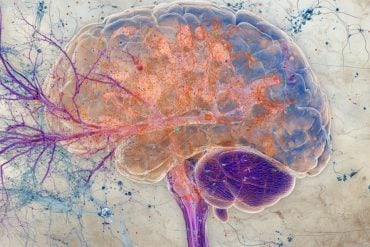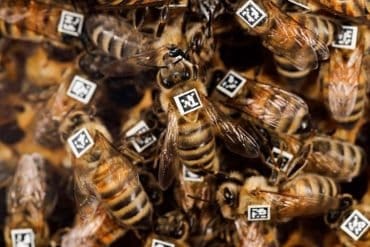Summary: UC Santa Barbara researchers reveal humans and fruit flies can sense the taste of calcium. The researchers have identified a unique class of gustatory receptor neurons required to help taste calcium in Drosophila.
Source: UC Santa Barbara.
Calcium is something of a double-edged sword. Too much of the essential element is as dangerous as too little, either case adversely affecting health in animals from humans to mice to fruit flies.
Sensing calcium at all can be crucial. Though it doesn’t fit into the five established tastes the tongue’s receptors can identify — sweet, sour, salty, bitter and savory (umami) — humans can taste it, and describe it as slightly bitter and sour.
New research conducted by scientists at UC Santa Barbara and colleagues in Korea has established that calcium taste also exists in fruit flies (Drosophila melanogaster). The team also uncovered a unique class of gustatory receptor neurons (GRNs) necessary for calcium taste in these model organisms. Surprisingly, given that some calcium is necessary to sustain life, the flies were indifferent to low calcium and averse to high levels. The findings appear in the journal Neuron.
“We wanted to understand the underlying mechanisms used to respond to the presence of calcium in food,” said senior author Craig Montell, UCSB’s Duggan Professor of Molecular, Cellular, and Developmental Biology and Neuroscience. “We not only identified the taste neurons but also found three receptor proteins that are important in sensing calcium. In fact, eliminating any one of them allowed us to do an interesting survival experiment.”

The investigators used petri dishes with one side containing solely sugar (fructose) and the other a mix of sugar and a high level of calcium. Normal flies that rejected the high-calcium side and ate only pure fructose survived. Mutant flies — those in which any one of the three newly found GRNs was removed — were unable to distinguish the two halves of the petri dish. As a result, they consumed enough of the calcium to cause viability problems and, over time, died.
“It turns out that fruit flies don’t have a mechanism for sensing low calcium even though it’s good for them, but they are trying to guard against consuming too much calcium,” Montell explained.
“Surprisingly, we found that calcium avoidance occurred through two mechanisms: activation of a unique class of GRNs, distinct from those that sense bitter compounds and which cause a stop-feeding signal when activated. In addition, calcium inhibits sugar-activated GRNs,” he added. “In humans, high calcium is associated with many diseases and can even be life threatening. Our results suggest that calcium taste might function primarily as a deterrent in wide range of animals, including humans.”
Source: Julie Cohen – UC Santa Barbara
Publisher: Organized by NeuroscienceNews.com.
Image Source: NeuroscienceNews.com image is credited to Peter Allen.
Original Research: Abstract for “Calcium Taste Avoidance in Drosophila” by Youngseok Lee, Seeta Poudel, Yunjung Kim, Dhananjay Thakur, and Craig Montell in Neuron. Published online December 21 2017 doi:10.1016/j.neuron.2017.11.038
[cbtabs][cbtab title=”MLA”]UC Santa Barbara “The Sixth Taste?.” NeuroscienceNews. NeuroscienceNews, 4 January 2018.
<https://neurosciencenews.com/calcium-taste-8267/>.[/cbtab][cbtab title=”APA”]UC Santa Barbara (2018, January 4). The Sixth Taste?. NeuroscienceNews. Retrieved January 4, 2018 from https://neurosciencenews.com/calcium-taste-8267/[/cbtab][cbtab title=”Chicago”]UC Santa Barbara “The Sixth Taste?.” https://neurosciencenews.com/calcium-taste-8267/ (accessed January 4, 2018).[/cbtab][/cbtabs]
Abstract
Calcium Taste Avoidance in Drosophila
Highlights
•Vinegar flies taste Ca2+ and reject foods that contain high levels
•Ca2+ suppresses feeding through opposing effects on two classes of taste neurons
•Members of the ionotropic receptor (IR) family are required for sensing Ca2+ in food
•Flies taste and avoid foods with high levels of Ca2+ to avoid Ca2+ toxicity
Summary
Many animals, ranging from vinegar flies to humans, discriminate a wide range of tastants, including sugars, bitter compounds, NaCl, and sour. However, the taste of Ca2+ is poorly understood, and it is unclear whether animals such as Drosophila melanogaster are endowed with this sense. Here, we examined Ca2+ taste in Drosophila and showed that high levels of Ca2+ are aversive. The repulsion was mediated by two mechanisms—activation of a specific class of gustatory receptor neurons (GRNs), which suppresses feeding and inhibition of sugar-activated GRNs, which normally stimulates feeding. The distaste for Ca2+, and Ca2+-activated action potentials required several members of the variant ionotropic receptor (IR) family (IR25a, IR62a, and IR76b). Consistent with the Ca2+ rejection, we found that high concentrations of Ca2+ decreased survival. We conclude that gustatory detection of Ca2+ represents an additional sense of taste in Drosophila and is required for avoiding toxic levels of this mineral.
“Calcium Taste Avoidance in Drosophila” by Youngseok Lee, Seeta Poudel, Yunjung Kim, Dhananjay Thakur, and Craig Montell in Neuron. Published online December 21 2017 doi:10.1016/j.neuron.2017.11.038






